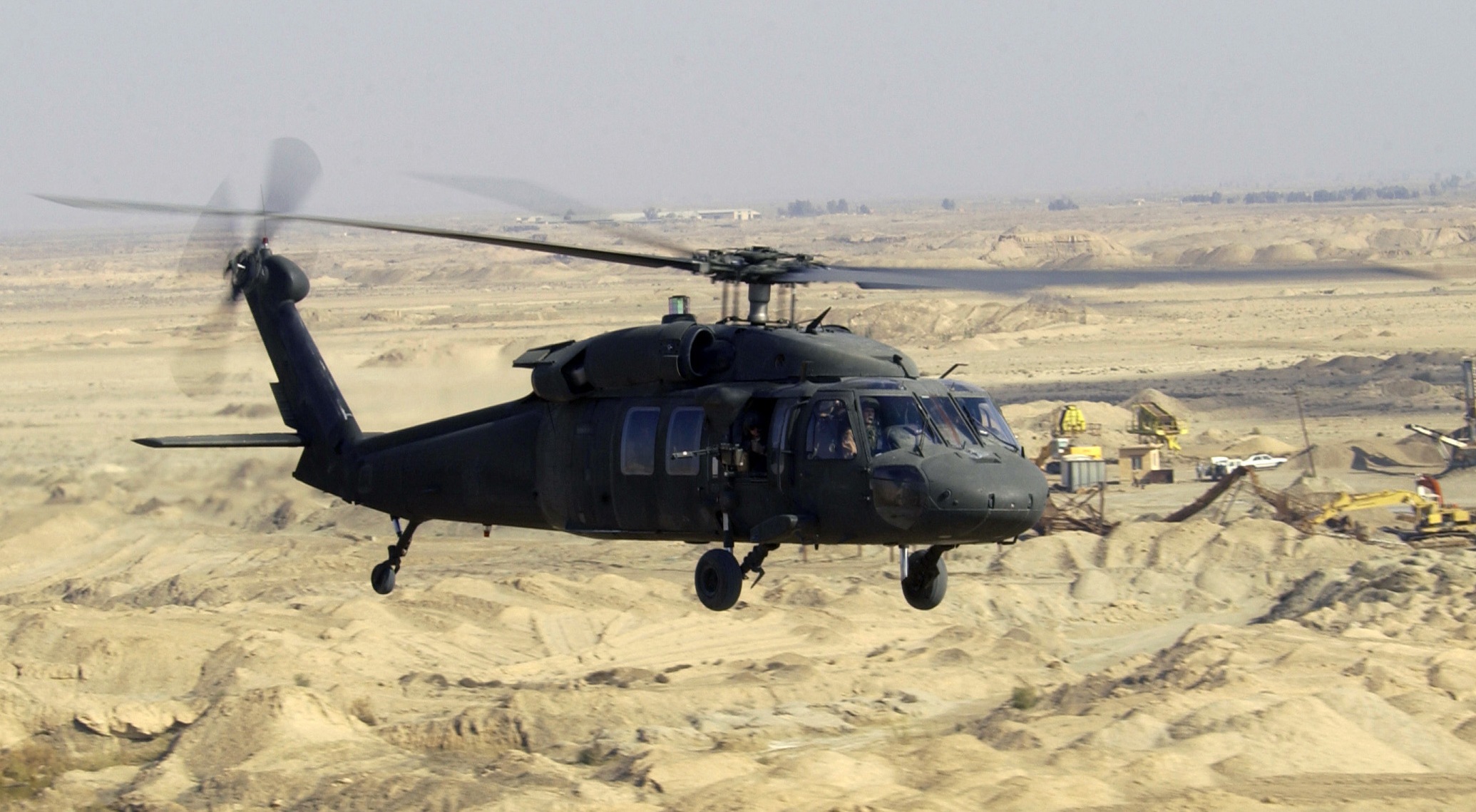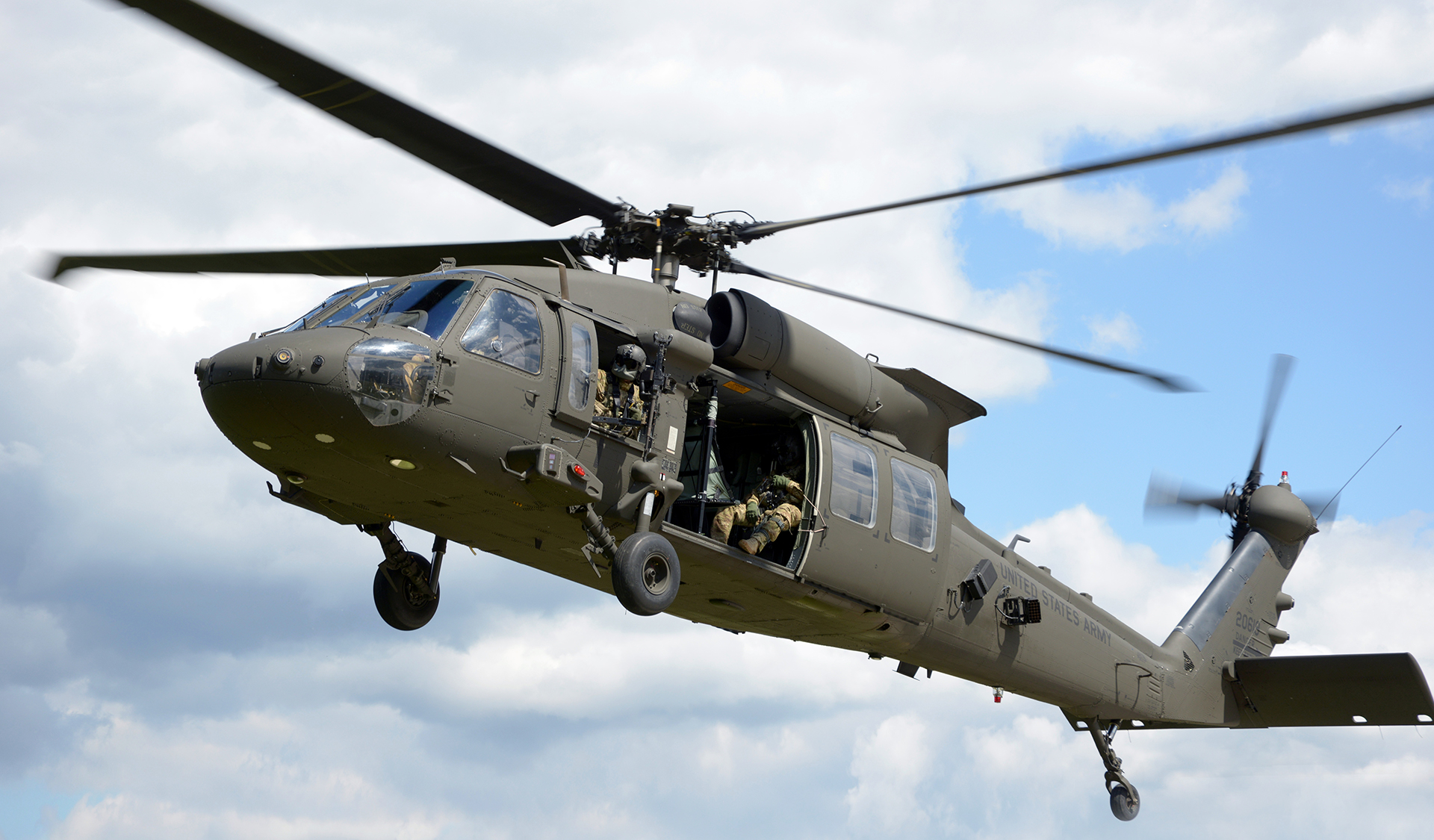The Significance of the UH 60 in Armed Force Operations and Catastrophe Alleviation Efforts
The Significance of the UH 60 in Armed Force Operations and Catastrophe Alleviation Efforts
Blog Article
UH-60: Developments in Modern Helicopter Design
The UH-60 helicopter stands as a benchmark in modern aviation, showcasing considerable innovations in design and technology that deal with the progressing demands of army operations. Its unification of innovative products not just improves efficiency yet additionally addresses crucial safety and security problems. Furthermore, the combination of advanced avionics has actually transformed operational capacities, enabling better situational understanding and decision-making effectiveness. As we discover the evolution and crucial technologies of the UH-60, it becomes vital to take into consideration just how these advancements influence not just existing applications but additionally the future landscape of helicopter design.

Advancement of the UH-60
The development of the UH-60 Black Hawk helicopter stands for a considerable turning point in aerospace design and armed forces air travel. Presented in the late 1970s, the UH-60 was designed by Sikorsky Airplane to fulfill the United States Army's need for a functional utility helicopter efficient in performing a variety of missions. Its style highlighted maneuverability, speed, and toughness, establishing brand-new requirements for functional efficiency.
The UH-60 features a distinctive four-blade rotor system, which improves lift and security, allowing it to run properly in varied settings. Its airframe is built from innovative composite materials, contributing to a reduction in weight while preserving architectural honesty. The helicopter's layout likewise includes better the rules of aerodynamics, which improves gas efficiency and boosts array.
Over the years, the Black Hawk has gone through multiple upgrades to improve its capacities, consisting of enhanced engines, progressed flight control systems, and modular systems for simple maintenance and versatility. The helicopter's ability to perform goals varying from troop transport to medical discharge has actually strengthened its function as a foundation of U.S. military operations. The UH-60 Black Hawk stays an archetype of exactly how advancement in helicopter design can dramatically influence military effectiveness and functional versatility.
Advanced Avionics Solutions
Developments in avionics systems have actually changed the capabilities of modern-day helicopters like the UH-60 Black Hawk, boosting operational efficiency and situational awareness (UH 60). The assimilation of advanced avionics enables improved communication, flight, and navigating monitoring, making the UH-60 much more functional in diverse mission accounts
One of the crucial attributes is the sophisticated electronic cockpit, which utilizes multifunction displays that provide real-time information, ensuring pilots have prompt accessibility to essential flight info. This streamlining of info decreases pilot work and boosts decision-making procedures during complex procedures. In addition, the incorporation of GPS and inertial navigation systems allows accurate positioning and path preparation, improving objective implementation in tough atmospheres.
In addition, progressed avionics systems boost communication abilities via safe and secure information web links and voice interaction systems, permitting seamless sychronisation with ground forces and various other aircraft. The assimilation of automatic flight control systems even more contributes to enhanced stability and control, specifically in damaging climate problems or throughout low-altitude maneuvers.
Engine and Performance Enhancements
Engine performance in contemporary helicopters has actually taken a significant leap ahead, driven by technologies that increase integrity, performance, and power. At the leading edge of these advancements is the adoption of more powerful turboshaft engines, particularly those utilizing advanced products and innovations that allow higher temperature level resistances and raised thrust capacities. The UH-60 Black Hawk, as an example, makes use of the T700-GE-701C engine, which features a dual-channel, full-authority electronic engine control system. This system improves efficiency while enhancing fuel intake and minimizing upkeep needs.
Additionally, the assimilation of engine wellness tracking systems enables real-time diagnostics and anticipating upkeep, dramatically boosting operational integrity. These systems not just alert staffs to possible problems before they become vital however also facilitate extra efficient upkeep scheduling, thus reducing downtime.

Products and Structural Innovations
Current developments in products and architectural layout have transformed modern helicopter building and construction, enhancing both efficiency and resilience. The introduction of sophisticated composite products, such as carbon fiber reinforced polymers, has actually significantly reduced weight while preserving architectural stability. This shift not just boosts fuel performance but likewise enhances haul capability, allowing helicopters like the UH-60 to execute even more diverse missions.
Furthermore, innovations in light weight aluminum alloys and titanium components have added to enhanced resistance to corrosion and tiredness, check my source extending the lifespan of important airframe aspects. The critical usage of these products has actually resulted in a decrease in maintenance requirements and improved total functional readiness.

Furthermore, the integration of computer-aided design (CAD) and additive production modern technologies has actually allowed extra lightweight frameworks and complex geometries, enhancing the wind resistant performance of helicopter styles. These advancements facilitate fast prototyping and production, permitting manufacturers to respond swiftly to developing goal needs.
Security and Survivability Attributes
Safety and security and survivability features in contemporary helicopter layout have actually come to be paramount, reflecting the enhancing needs for mission effectiveness in difficult environments. The UH-60 Black Hawk, a notable instance, integrates innovative innovations to enhance crew and passenger protection. Among the most vital innovations is the incorporation of crashworthy gas systems developed to decrease the risk of fire during impact. Additionally, the airframe is created with strengthened products that dissipate and soak up energy, more securing passengers in case of an accident.
The helicopter likewise uses a ballistic protection system, that includes armored staff seats and vital systems shielding, minimizing susceptability to small arms fire and shrapnel. Enhanced situational recognition is achieved via sophisticated avionics and sensor technologies, enabling pilots to spot and stay clear of risks properly.
In addition, the combination of redundancy in essential systems-- such as double engines and several flight control networks-- makes sure continued operation even if one system stops working. The UH-60 is furnished with sophisticated emergency situation flotation devices, boosting survivability in water touchdowns. Collectively, these functions not only enhance the safety of personnel but likewise enhance goal success prices in aggressive environments, demonstrating the commitment to excellence in helicopter style.
Final Thought
The UH-60 helicopter stands for a substantial advancement in modern aeronautics modern technology, integrating ingenious materials, cutting-edge avionics, and durable safety and security features. Its development Learn More Here reflects a dedication to boosting performance and functional performance while making sure pilot and team survivability. The integration of light-weight compounds and advanced navigating systems emphasizes the helicopter's adaptability in numerous army goals. Overall, the UH-60 functions as a standard for future advancements in helicopter style, personifying resilience and adaptability in contemporary army operations.
The UH-60 helicopter stands as a benchmark in modern aeronautics, showcasing substantial advancements in design and innovation that provide to the developing needs of army operations. As we explore the evolution and essential advancements of the UH-60, it becomes important to consider exactly how these developments affect not only current applications yet likewise the future landscape of helicopter style.
Introduced in the late 1970s, the UH-60 was developed by Sikorsky Aircraft to satisfy the United States Army's demand for a flexible utility helicopter capable of performing a range of objectives. The UH-60 Black Hawk remains a prime example of how innovation in helicopter layout can dramatically affect armed forces efficiency and functional versatility.
In general, the UH-60 offers as a benchmark for future growths try here in helicopter layout, embodying strength and adaptability in contemporary army procedures.
Report this page